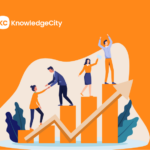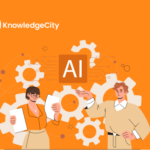The word “digital” has been thrown around as the emerging core of how businesses will operate in the future. But what does it mean? The word itself simply means information is recorded as a series of binary digits. That may be exciting for computer programmers, but for the rest of us, how will this upgrade to digital affect our businesses and our jobs?
According to Mark McDonald of Accenture, digital describes “an increasing information intensity and connectedness of physical resources.” Facilities, processes, people, and teams are some of the resources that become digital by using technology that can extract information and then connect these resources to other resources. It’s not limited to specific technologies. Using digital applications can transform an instrument into a valuable tool.
Although the process of digitization is technical, the simple explanation is technology takes information from resources and then creates new connections between these resources. Think about the difference between a paperback book and an eBook. Then think about technologies that allow you to be part of the digital workforce, whether you use the cloud or tablets or other applications. You can see how digital efficiency is a job skill employees need.
Digitizing your business and workforce should do more than just improve revenue channels. It should also create innovative strategies, products, processes, and experiences that bring value to the customer and add efficiency to the process.
It used to be digital businesses were primarily online businesses that pioneered the use of technology to enhance the customer service experience. Think of how customer service has changed over the past decade and you can see the move from one person and a telephone to options, such as texting, online chat, and apps, that eliminate waiting in a queue for a response.
The other growth area due to the digital revolution is online selling. Using a combination of digital and physical resources can give online sellers an edge. Digital businesses have the advantage of creating new value chains and opportunities by doing things in a direct way.
What differentiates a digital-efficient business model from a traditional one?
- It makes use of existing technologies in order to cut costs, gather data and provide a better customer experience.
- It embraces the concept of digital transformation, which includes restructuring jobs and the organization.
- It puts customer service at the center of the digital strategy.
With the trend moving toward greater use of digital technologies, which upgrades are critical to success? Oudi Antebi, co-founder of Redkix, sees mobile and social media technologies as the drivers of the trend. No longer will people be tied to a particular place or computer. Business software will transform email from an inbox-based system to a real-time messaging system that will personalize and unify the consumer experience.
Enterprise platforms and tools will provide ways for workers and consumers to collaborate in real-time, no matter where they are or what device they are using. New software programs must be user-friendly and be able to adjust quickly to new changes.
The collection, analysis and use of data are at the heart of the digital revolution. The use of artificial intelligence has grown by making recommendations based on data analysis that would have taken far longer and been less accurate just a few years ago.
If you have upgraded your technology processes to create a digitally efficient organization, what still needs to be done? The key is to recruit and retain a digital-savvy workforce that has the skills to develop and use the technology tools. This process starts with an efficient digital plan.
Workers with digital efficiency should have skills in six areas:
- Documentation using digital tools and sharing data across departments.
- Coordination and collaboration using video conferencing, file sharing and project tracking.
- Communication through an understanding of email, SMS, social media, IM and voicemail.
- Attention management due to more digital connectedness and use of prioritization skills.
- Research to identify credible information and use efficient methods to extract data.
- Privacy and security rules and regulations that govern digital data.
Digital transformation is being called the Fourth Industrial Revolution that will change the way we do business now and in the future. New skills to augment current competencies, such as creativity and critical thinking, will be required to be a valuable, contributing member of this emerging workforce.
Learn how to leverage technology in your business with our course Leveraging Technology.
Subscribe to Our Newsletter
Join 80,000+ Fellow HR Professionals. Get expert recruiting and training tips straight
to your inbox, and become a better HR manager.



 KnowledgeCity
KnowledgeCity 










